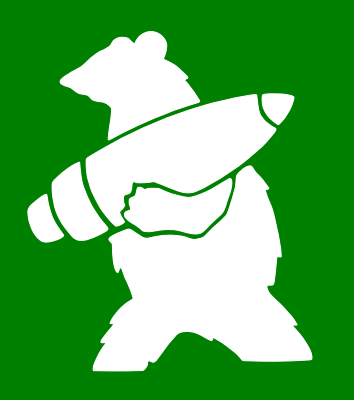5 Astounding Animal Achievements
5. Hachiko, The loyal trainstation dog
1923-1935
Hachiko was an Akita Inu dog who would follow his master to the Shibuya train station every day, and wait for him there to return. One day in 1925 Hachiko's owner, Hidesaburo Uneo, died at work and never returned. Hachiko returned to the train station every day of his life, for the next 10 years, at the same time every day to wait for his master. Hachiko's unwavering loyalty was noted by workers at the train station, as well as a student of the dog's former master, who had been a professor in the agricultural department at the University of Tokyo.
The first several years of his waiting were rough for Hachiko, it is said that the train station staff and travelers were "less than friendly" to him. But in 1932, several years after Professor Uneo's death, his former student, Hirokichi Saito, published some articles about Hachiko's loyalty, which garnered Hachiko national attention that slowly built the faithful dog up to a legend.
After his death, a statue of Hachiko was erected outside of the Shibuya train station. Many years later, in 1987, and again in 2009, his story still inspiring to the world, movies were made about his life. And most recently, earlier this year, a statue of Hachiko reunited with his owner was installed on the grounds of the University of Tokyo. Hachiko has become a symbol in Japan representing steadfast loyalty.
4. Wojtek, the Polish soldier bear.
1942-1963
Wojtek was an orphaned Syrian brown bear, found in 1942 with a boy in Hamadan, Iran, and purchased by soldiers of the 22nd Artillery Supply Company of the Polish II Corps. The soldiers took him in, and gave him the name, which means "joyful warrior" in Polish. The cub was raised and trained by the soldiers, and fed much of the sweet stuff from their rations including condensed milk, fruit, marmalade and honey. His favorite drink became beer.
This charming bear was part of WWII. He was officially enlisted as a Private in the Polish army, and thus was allowed on planes and boats to travel with his company, as well as the added bonus of getting his own rations. He was actually put on payroll, and he actually helped his company by carrying artillery for them, as well as being incredible for morale.
Towards the end of WWII, Wojtek became the official mascot for the 22nd Company. An official emblem was made of a bear carrying an artillery shell, which is still popular around the internet and on t-shirts today. A small monument commemorating Wojtek stands in Park Jordana, Krakow; and Wojtek the bear has become a symbol in Poland for courage and camaraderie.
3. KOKO, THE signing GORILLA
1971-PRESENT
Koko the gorilla was born on July 4th, 1971 at the San Francisco zoo. "Koko" is short for "Hanabi-Ko," which literally translates to "Fireworks child," in Japanese, and is a subtle tribute to her birthday having fallen on Independence Day.
Koko is unofficially the gorilla spokesperson for biodiversity, made possible by The Gorilla Foundation. Koko's message to the world is to help preserve Gorillas, which are an endangered species.
From a very young age, Koko has been under the care and tutelage of Dr. Penny Patterson, animal psychologist, who has been teaching Koko to learn to use sign language to communicate with humans. Koko has been signing since she was only one year old. She has learned an adapted version of ASL that Dr. Patterson calls GSL (Gorilla Sign Language), and Koko knows more than 1,000 signs, and over 2,000 spoken words. Her grasp of language and communication is comparable to that of a young human child.
Koko is the subject of the world's longest continuous experiment to teach language to another species. But in this experiment, more than just teaching words to an animal happened. Koko has learned to express herself, and opened up for the world to empathize and learn things about her personality. In her bio, on her website, some of Koko's favorite things are listed. Koko's favorite color is red, one of her favorite foods is corn on the cob, and her favorite activities include playing with dolls and drawing. Koko has won the hearts of many over the years, and hopes to help save gorillas all over the world from the endangered species list.
2. Sgt Reckless, the supply horse
Unknown, c. 1948-1968
Sergeant Reckless was a pack horse for the Recoilless Rifle Division, Anti-Tank Company, 5th Marine Regiment, 1st Marine Division during the Korean war. She was purchased in 1952 by Marines from a racetrack in Seoul, Korea, from a man who needed money to buy a prosthetic leg for his sister, who had sustained injuries from a land mine. Sgt Reckless's original given name was Ah Chim Hai, which translates to "Flame of the Morning." She was renamed Reckless after a slang term for the Recoilless Rifle of her division's soldiers: the "reckless rifle." She later earned the unofficial title Sergeant, when she was promoted to Staff Sergeant in 1957, by Colonel Richard Rothwell.
Pack horses were used in the Korean war because they were a convenient way to haul equipment through harsh terrain. If there were already so many pack horses, what was so special about Sgt Reckless? Well, for starters, she learned her supply routes quickly, and could run them by herself, which was almost unheard of as far as pack horses went, and absolutely astounding that she would willingly make supply runs to the front lines with battle raging all around her. If you know horses, you know that they can get scared very easily, and tend to run away and avoid doing things that scare them a second time. This behavior in itself set her apart from other pack horses. But she also had an endearing personality and boosted morale among the Marines. She was said to be fond of beer, coca cola, candy, and scrambled eggs; and would eat almost anything.
Sgt Reckless's shining moment came in March 1953 at the peak of the battle for Outpost Vegas. The battle lasted for 5 days, but during one day of the heavy fire of this battle, she made over 50 trips, mostly by herself, to the front lines--bringing over 9,000 lbs of much needed ammunition through no man's land to the front lines, and carrying back wounded soldiers. She totaled over 30 miles worth of trips back and forth that day, all while surrounded by deafening explosions and battlefield danger. An astounding feat for a little horse. For her dedication and bravery, Sgt Reckless was awarded the officially recognized rank of Staff Sergeant, two Purple Hearts, a Good Conduct Medal, and a Navy Unit Commendation, among other awards. Sgt Reckless has had a book published about her life, and in 2013, a statue was dedicated to her at the National Museum of the Marine Corps, in Quantico, Virginia.
An image from the unveiling of Sgt Reckless's statue at the National Museum of the Marine Corps. Click the image to read more about Sgt Reckless.
1. Laika, the Space Dog
unknown, c. 1954 - 1957
Laika was the first living organism sent to orbit Earth. Historical spoiler alert: prepare your brain for sadness, for the story of this courageous mutt ends in a very somber sacrifice.
Laika was chosen off the streets of Moscow to be sent into space. She was a stray mixed mutt, and strays were chosen for these types of missions on the assumption that they were already used to severe conditions such as extreme temperatures. Much was unknown about the harsh conditions of space and space travel at the time, and experiments with animals were conducted to test the effects before humans. Laika was sent into space to orbit Earth aboard the Sputnik 2. It was an experiment to see if life forms could survive a launch into space and orbiting around earth. Similar to human knowledge of space travel conditions, much was lacking in the world's ability to build space craft at the time. From the moment she was chosen for this mission, it was known that Laika would never return. The Sputnik 2 was not built for retrieval or a return to Earth. The spacecraft, with Laika aboard, was launched into space on November 3rd, 1957.
Information released in 2002 states that Laika died 6-7 hours into her flight. Before then, the public had been told that Laika died on the 6th day of her mission, due either to lack of oxygen or euthanasia through a poisoned serving of food. The truth released states that she died of stress and overheating due to a failure of some equipment, which made the temperature inside the cabin 104 degrees Fahrenheit. Reading her story has made me cry multiple times, and it is my personal opinion that she died of panic and traumatic stress, as throughout her training, Laika was always around people, which is very reassuring for dogs. When she was launched, she was utterly alone, and the amount of stress and fright she must have felt, coupled with overheating, was more than her body could handle. It truly must have been a terrifying fate. No amount of science or training could have prepared Laika to know what she would experience on her last day.
Laika orbited the earth a total of 2,570 times before the Sputnik 2 disintegrated falling back to earth. Her sacrifice was made in the name of science. Had the truth of her death come out immediately, it could have caused the scientific community and the world over to think that it was not possible to send living organisms into space, and an endeavor not worth pursuit. Thanks to Laika's mission, humanity kept a positive view of continued exploration of the final frontier. In 2008, a statue in memory of Laika was unveiled in Moscow.











